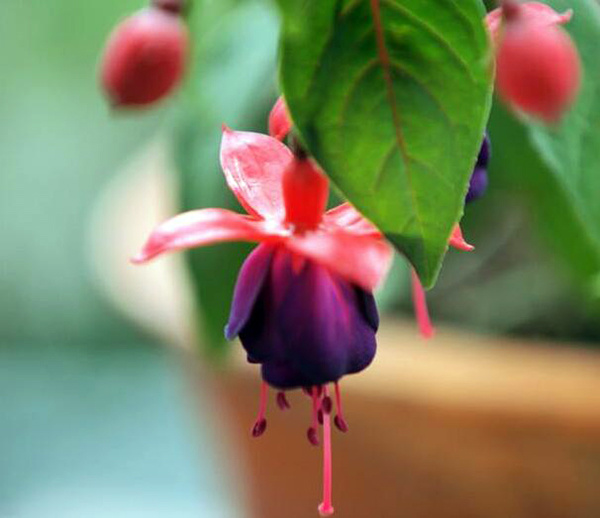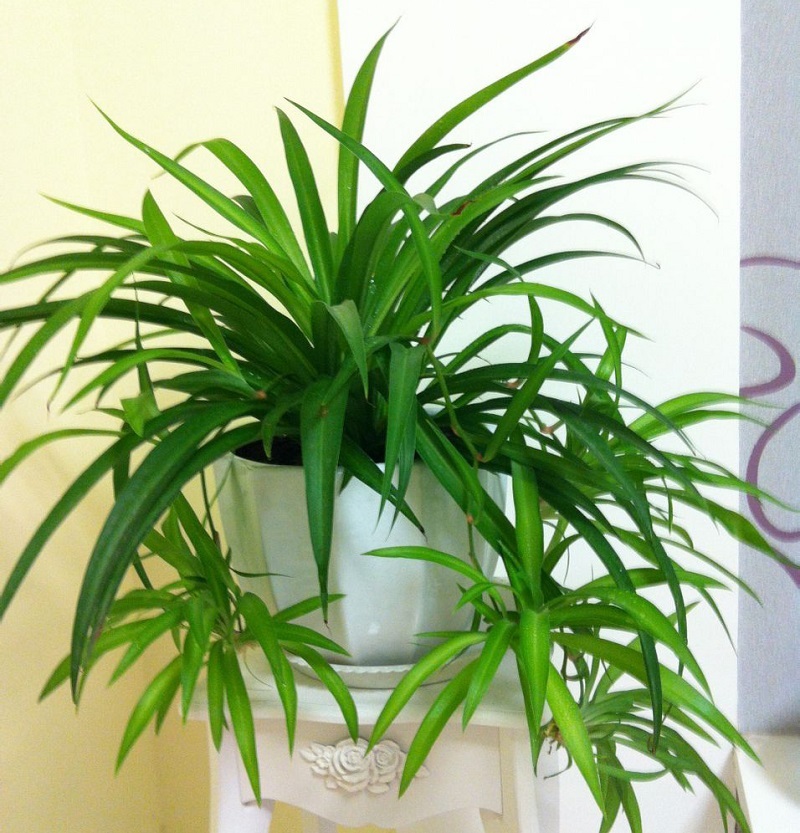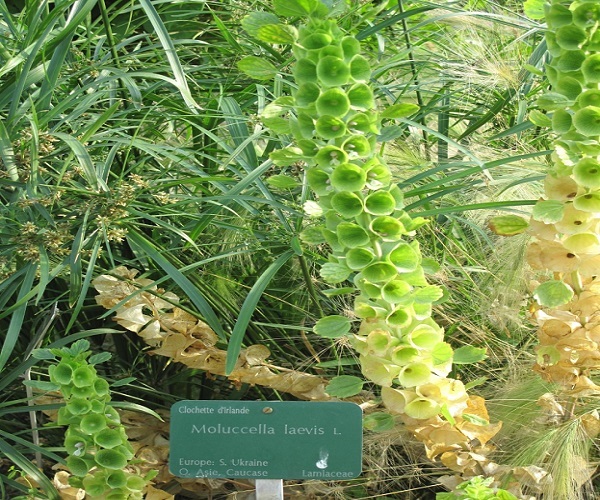The culture method of hanging bell flower

Soil requirement
The substrate of potted bell flower should be cultivated with fertile, loose and well-drained soil. generally, rotten leaf soil and Gaza loam soil can be evenly mixed with rotten organic fertilizer and phosphate fertilizer, without the need to apply base fertilizer to avoid rotting roots. The clayey and heavily consolidated soil is disadvantageous to the growth of the bell flower, and it is not suitable for the seedlings that have just survived cuttage.
Light condition
Although the bell flower likes the shade, it does not mean that it does not need sunlight. In the case of lack of sunlight, it is not only easy to grow, but also causes the flower color to fade and the flower to become smaller or even fall into buds. Therefore, in the process of planting bell flowers in the family, they can be placed on a sunny balcony or terrace for photosynthesis.
Temperature condition
The temperature for the growth of the bell flower is 10 ℃ 28 ℃, and the temperature in summer should not exceed 30 ℃, so the cooling work should be done well in summer. Sufficient sunshine is required in winter, and the temperature of the culture soil should not be lower than 5 ℃, otherwise it will cause frost damage and heat preservation measures must be taken. In addition, we should pay attention to ventilation in both winter and summer.
Watering method: the bell flowers should be watered according to the principle of dry and wet in peace. in dry spring and hot summer seasons, you can spray water on the branches and leaves twice a day. If you water too much, it will cause stagnant water in the basin. If the room temperature is low in winter, watering should be strictly controlled and fertilization should be stopped to prevent rotting roots. Loosen the soil in time after each fertilization and watering to facilitate ventilation.
adequate manuring
Because the bell flower grows fast and blossoms many times, it is necessary to apply thin fertilizer frequently during the growth period, applying thin cake fertilizer or compound fertilizer about every 10 days, and applying liquid fertilizer dominated by phosphorus and potassium once a month during flowering, but stop fertilizing in high temperature season. The basin soil should be dry before fertilization, and spray water with fine sprinkler once after fertilization to avoid leaf rot.
The culture method of how to raise the bell flower
The bell flower has many and dense flowers, and the large plant can blossom more than 1000; the flower with bright color and long flowering period is a kind of ornamental flower favored by the public. Next, I would like to tell you about the culture method of hanging bell flower, hoping to help you.
Culture method of hanging bell flower
Soil requirements: the substrate of potted bell flower should be cultivated with fertile, loose and well-drained soil. generally, rotten leaf soil and Gaza loam soil can be evenly mixed with rotten organic fertilizer and phosphate fertilizer, and there is no need to apply base fertilizer to avoid rotting roots. The clayey and heavily consolidated soil is disadvantageous to the growth of the bell flower, and it is not suitable for the seedlings that have just survived cuttage.
Lighting conditions: although the bell flower likes the shade, it does not mean that it does not need sunlight. In the case of lack of sunlight, it is not only easy to grow, but also lead to lighter flowers, smaller flowers and even buds. Therefore, in the process of planting bell flowers in the family, they can be placed on a sunny balcony or terrace for photosynthesis.
Temperature conditions: the growth temperature of the bell flower is 10 ℃ 28 ℃, and the temperature in summer should not exceed 30 ℃, so we should do a good job in cooling in summer. Sufficient sunshine is required in winter, and the temperature of the culture soil should not be lower than 5 ℃, otherwise it will cause frost damage and heat preservation measures must be taken. In addition, we should pay attention to ventilation in both winter and summer.
Watering method: the bell flowers should be watered according to the principle of dry and wet in peace. in dry spring and hot summer seasons, you can spray water on the branches and leaves twice a day. If you water too much, it will cause stagnant water in the basin. If the room temperature is low in winter, watering should be strictly controlled and fertilization should be stopped to prevent rotting roots. Loosen the soil in time after each fertilization and watering to facilitate ventilation.
Rational fertilization: because the bell flower grows fast and blossoms many times, it is necessary to apply thin fertilizer frequently during the growth period, apply thin cake fertilizer or compound fertilizer about every 10 days, and apply liquid fertilizer mainly based on phosphorus and potassium once a month during flowering, but stop fertilizing in high temperature season. The basin soil should be dry before fertilization, and spray water with fine sprinkler once after fertilization to avoid leaf rot.
Matters needing attention in the culture of hanging bell flower
During the growth period, cool climate is required, and 10Mel 15 ℃ is suitable; sufficient sunshine is required in winter, which can withstand the low temperature of 3Mel 5 ℃; in summer, it is in a state of semi-dormancy, avoiding heat and preferring half shade. The south needs shade from May to October, and the temperature grows most rapidly when the temperature is 15 ℃ and 23 min. The key to the cultivation technique is to make the hanging bell flower spend the summer safely. When the air temperature rises to 30 ℃, it is disadvantageous to its growth. Cooling measures should be taken, which can be placed in a ventilated shade, but Rain Water can also be short pruned to avoid getting wet. Stop fertilizing in summer and control watering to make it dormant gradually. After flowering, when the leaves begin to turn yellow, prune, leaving only the base 20 cm, so that it sends new branches, which is conducive to the safety of the summer. The bell flower is afraid of waterlogging, and the seedlings on the pot can not use too large flowerpots at the beginning, so as to avoid poor drainage and soil waterlogging and death. Only with the growth of the plant, gradually replace the larger flowerpot. Chimonanthus likes to be rich in humus and slightly acidic sandy loam with good drainage. The clayey and heavily consolidated soil is disadvantageous to its growth, let alone the seedlings that have just survived by cutting.
The above is for you to talk about the breeding method of the bell flower, is everyone clear? Please pay attention to more knowledge of home decoration.
The efficacy and function of Dioscorea angustifolia Culture method of hanging bell flower
The bell flower, also known as the inverted golden bell, is a beautiful ornamental plant. it is a perennial semi-shrub with erect stems, originally produced only in Mexico, and later introduced to all parts of the world, and now it is a common green potted plant indoors. Unlike other indoor plants, bell flowers have certain medicinal effects. What are the efficacy and effects of bell flowers? What are the breeding methods of bell flower? Let's go with the editor to get to know it.
The efficacy and function of hanging bell flower:
When it comes to the efficacy and function of the bell flower, in addition to the ornamental function of conventional plants, it also has outstanding medicinal effects, which can treat falls and injuries. Its specific function is to take a look at the following introduction:
1. The bell flower can be enjoyed by people:
For people to watch is an important effect of hanging bell flowers, its strange shape, colorful, give people an elegant and beautiful feeling, can be made into potted plants for people to watch, put it on the balcony, windowsill and study can play a role in beautifying the environment and pleasing the body and mind.
2. The medicinal effect of Dianzhong flower:
The whole plant of Dianzhong flower can be used in medicine. After being used in medicine, it tastes slightly astringent and flat, and it can return to the liver meridian and kidney meridian. Expelling wind, removing dampness and dispelling blood stasis and relieving pain are its most important drug efficacy. It is usually used in the treatment of diseases such as human rheumatic pain and postpartum abdominal pain, mainly in decoction, and the dosage will not exceed 60 grams.
3. The bell flower can cure the injury caused by falling and hitting:
The hanging bell flower has the effect of dispelling blood stasis and relieving pain, and has a good therapeutic effect on human injury. During the treatment, the fresh leaves of the bell flower can be taken, mashed vigorously and applied directly to the injured site. After several times, the symptoms of pain and swelling can disappear. In addition, this method can also be used for the treatment of human low back pain and joint pain, and the analgesic effect is particularly excellent.
Such as the above is a brief introduction to the efficacy and function of bell flowers, I believe that through the above introduction, we will have a further understanding and understanding of the role of bell flowers, of course, because the role of this kind of bell flowers is more prominent, so more and more people breed at home, breeding bell flowers is not easy, need to pay attention to methods, in the end what are the breeding methods of bell flowers? Let's take a look at the following introduction:
The culture method of hanging bell flower:
1. Soil requirements:
The substrate of potted bell flower should be cultivated with fertile, loose and well-drained soil. generally, rotten leaf soil and Gaza loam soil can be evenly mixed with rotten organic fertilizer and phosphate fertilizer, without the need to apply base fertilizer to avoid rotting roots. The clayey and heavily consolidated soil is disadvantageous to the growth of the bell flower, and it is not suitable for the seedlings that have just survived cuttage.
2. Lighting conditions:
Although the bell flower likes the shade, it does not mean that it does not need sunlight. In the case of lack of sunlight, it is not only easy to grow, but also causes the flower color to fade and the flower to become smaller or even fall into buds. Therefore, in the process of planting bell flowers in the family, they can be placed on a sunny balcony or terrace for photosynthesis.
3. Temperature conditions:
The temperature for the growth of the bell flower is 10 ℃ 28 ℃, and the temperature in summer should not exceed 30 ℃, so the cooling work should be done well in summer. Sufficient sunshine is required in winter, and the temperature of the culture soil should not be lower than 5 ℃, otherwise it will cause frost damage and heat preservation measures must be taken. In addition, we should pay attention to ventilation in both winter and summer.
4. Watering method:
It is necessary to grasp the principle of dry and wet when watering hanging bell flowers. In dry spring and hot summer seasons, you can spray water on branches and leaves twice a day. If you water too much, it will cause stagnant water in the basin soil. If the room temperature is low in winter, watering should be strictly controlled and fertilization should be stopped to prevent rotting roots. Loosen the soil in time after each fertilization and watering to facilitate ventilation.
5. Rational fertilization:
Because the bell flower grows fast and blossoms many times, it is necessary to apply thin fertilizer frequently during the growth period, applying thin cake fertilizer or compound fertilizer about every 10 days, and applying liquid fertilizer dominated by phosphorus and potassium once a month during flowering, but stop fertilizing in high temperature season. The basin soil should be dry before fertilization, and spray water with fine sprinkler once after fertilization to avoid leaf rot.
- Prev

How to propagate the orchid fastest?
Ramet: it is generally chosen to remove the old culture soil from the potted seedlings in spring, divide them into several clusters, and pot them into new plants respectively. First, dig the plant out of the pot, shake off the old soil, gently separate the old root, avoid harming the root system, and then transplant and culture separately. Cuttage: propagation using young plants on the walking stem. In the growing season
- Next

The planting method of shell flower
1, reproduction: shell flowers can be sowed to prevent reproduction, generally in spring, summer, autumn, if the need for uniform supply of flowers, easy to watch, can be sown in batches. 2. Potted soil: the size of the flowerpot depends on the number of seeds. The seeds are triangular. Usually 10-15 seeds can be planted in pots with a diameter of 15cm.
Related
- Fuxing push coffee new agricultural production and marketing class: lack of small-scale processing plants
- Jujube rice field leisure farm deep ploughing Yilan for five years to create a space for organic food and play
- Nongyu Farm-A trial of organic papaya for brave women with advanced technology
- Four points for attention in the prevention and control of diseases and insect pests of edible fungi
- How to add nutrient solution to Edible Fungi
- Is there any good way to control edible fungus mites?
- Open Inoculation Technology of Edible Fungi
- Is there any clever way to use fertilizer for edible fungus in winter?
- What agents are used to kill the pathogens of edible fungi in the mushroom shed?
- Rapid drying of Edible Fungi

